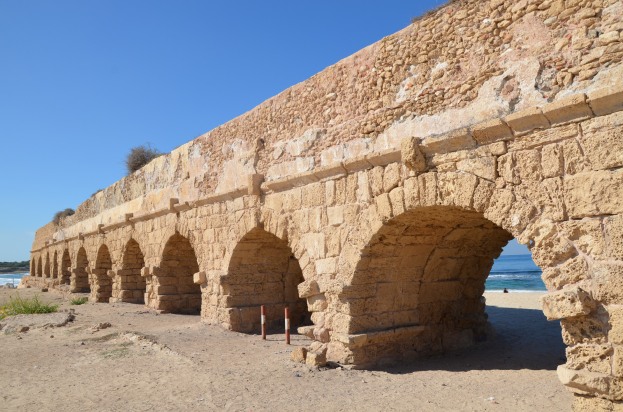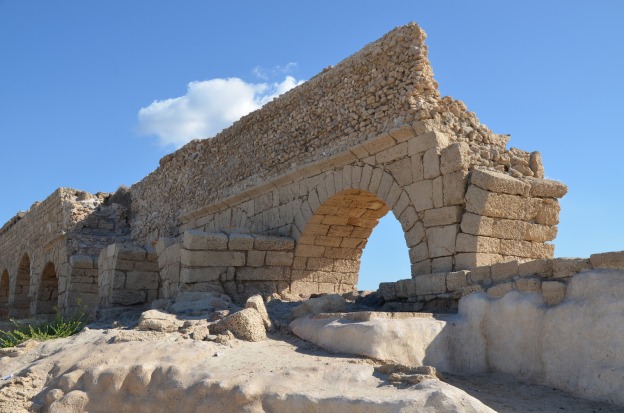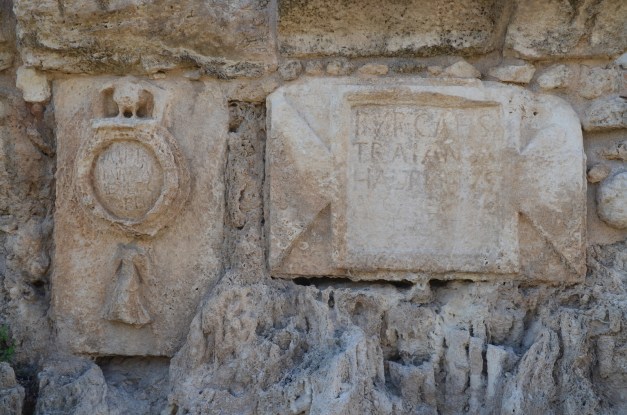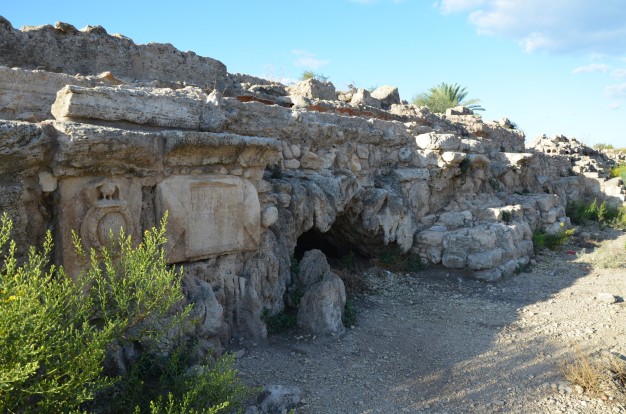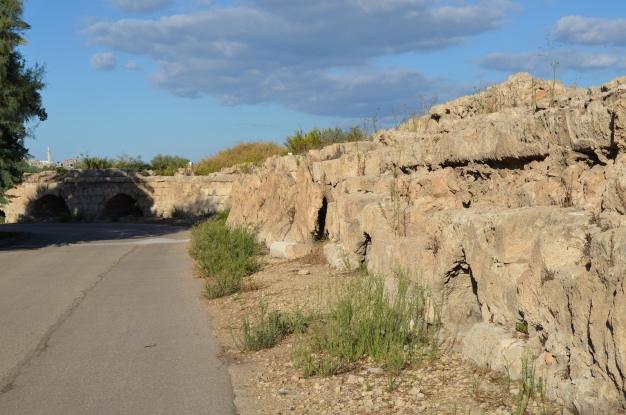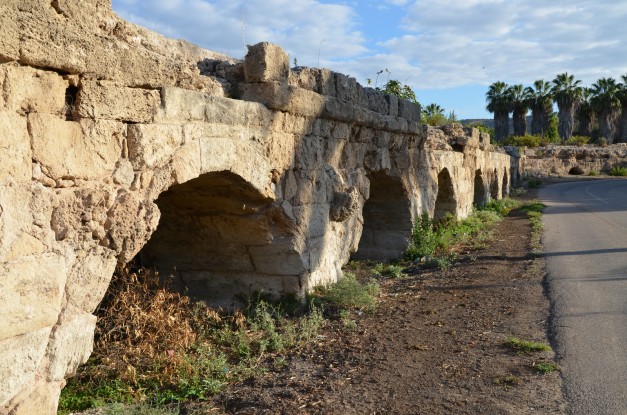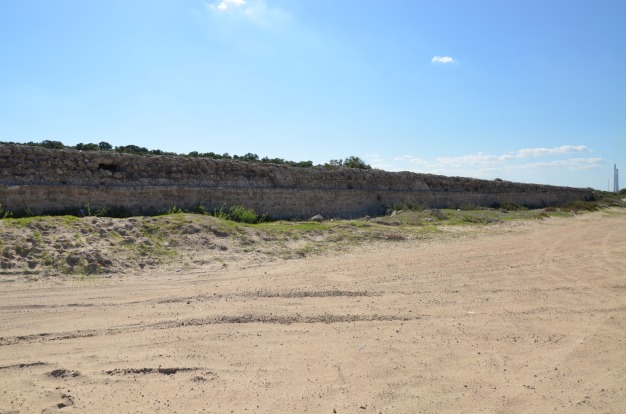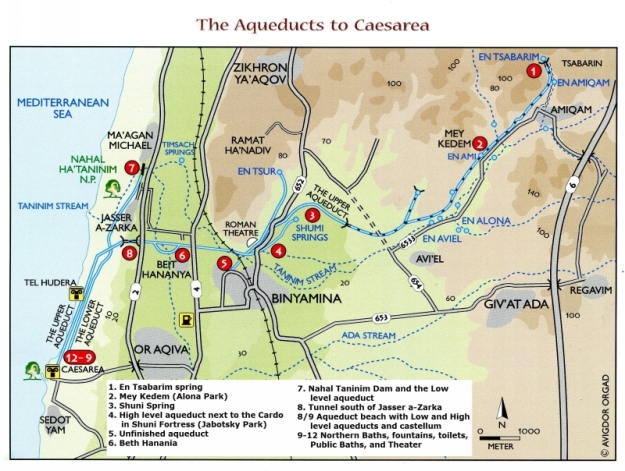Caesarea Maritima is perhaps one of Israel’s most famous attractions. Its ruins are located by the sea-shore of Israel about half way between Tel Aviv and Haifa. It is the site of one of the most important cities of the Roman World, the capital of the province of Judaea. The city was founded between 22 and 10 BC by Herod the Great (37-4 BC) as an urban centre and harbour on the site of the earlier Straton’s Tower. The city has been populated through the late Roman and Byzantine era. Today, Caesarea is a large and beautiful national park and a fascinating place to visit while exploring the Holy Land.
The Judaean port of Caesarea had no reliable source of fresh water when construction on the city began around 22 BC. King Herod commissioned a raised aqueduct to deliver water from the springs near Shuni, 16 kilometres north-east of Caesarea Maritima. Today, the most impressive part of the Herodian aqueduct (known as the high-level aqueduct I) can be seen on the beach of Caesarea, north of the ancient city.
When Hadrian visited Caesarea in 130 AD on his grand tour of the eastern part of the Roman Empire, the growth of the city required additional water. Hadrian then commissioned extensive repairs and a new aqueduct to be built. This new section (known as the high-level aqueduct II) was added to the right of the first canal and doubled its capacity. These twin parallel aqueducts continued to supply water for 1200 years.
Hadrian’s improvement on the work of Herod can be seen on the beach portion of the high-level aqueduct. The following photo shows the southern end of the aqueduct where the two stages of construction are clearly visible. The east channel of the aqueduct (right) was constructed by Herod the Great while the west channel (left) was built during the days of Hadrian.
Several inscriptions have been discovered and indicate that a number of legions, or rather vexillationes (a detachment of the Legion) from these legions, took part in the building task. These inscriptions make mention of three Roman legions active in repairing the high-level aqueduct during Hadrian’s reign: five inscriptions refer to Legio X Fretensis, two to Legio VI Ferrata, one to Legio XXII Deiotariana, and another one to Legio II Traiana Fortis.
The one attached to the aqueduct close to Beit Hanania, located about 2.8 miles north of Ceasarea, mentions the Tenth Legion (Legio X Fretensis) and comprises, on the left, of the legionary insignia (the legion’s emblem) and on the right, of a tabula ansata (table with dovetail handles) with the text “IMP CAES(ar) TRIAN HADR(ianus).”
A significant portion of the Hadrianic aqueduct is still visible at Beit Hanania. West of the aqueduct’ arches is the southern side of the Herodian aqueduct, whose arches are of a different width. The aqueduct continued straight while a new one, probably built at the end of the 3rd century AD, turned left and made a large detour to Caesarea.
A few more inscriptions were uncovered on the western side of the aqueduct. One inscription refers to the Twenty-second Legion, one to the Tenth Legion, and another one to the Second Legion (click on the links to see Wikipedia images).
Additional inscriptions are displayed in several museums. One inscription in the Ralli Museum in Caesarea refers to the repairs conducted by the Sixth Legion.

Inscription of the Legio VI Ferrata from the high-level aqueduct of Caesarea, dated to Hadrian (ca. 130), Ralli Museum, Caesarea
IMP(eratori) CAES[ARI] TRA(iano) HAD(riano) AVG(usto) PER VEXIL(lationem) LEG(ionis( VI FE[R(ratae)]
Another dedicatory inscription, discovered in 1927, can be seen in the Israel Museum in Jerusalem. The six line inscription, cut on a block of hard limestone, refers to the repairs conducted by the Tenth Legion.

Inscription discovered on the high-level aqueduct of Caesarea indicating the extensive repairs conducted by the Tenth Legion, Israel Museum
“The August emperor Caesar Trajan Hadrian made [the aqueduct] by [means of] the unit of the Tenth Legion Fretensis.”
A block of limestone with a tabula ansata and an inscription referring to the Sixth Legion is exhibited in the Rockefeller Museum in Jerusalem. The entire block is a remarkably elaborate presentation of the legion’s work on the aqueduct. The inscription is encircled by a wreath while to the left and right of the tabula ansata a winged Victoria is standing on a globe standing on a globe.
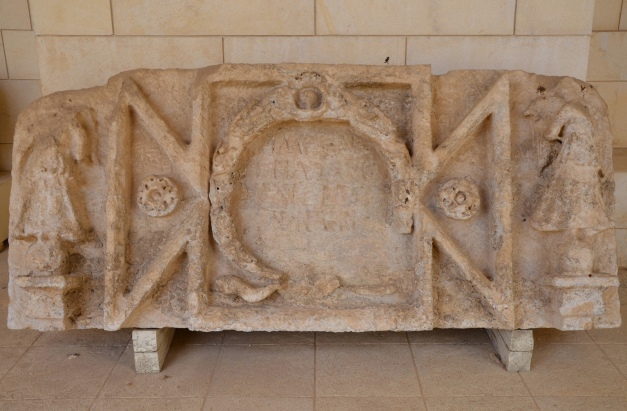
Inscription discovered in Shuni from the high-level aqueduct of Caesarea, Rockefeller Museum, Jerusalem
IMP(eratori) CAES[ARI] TRA(iano) HAD(riano) AVG(usto) PER VEXIL(lationem) LEG(ionis( VI FE[R(ratae)]
A third “low-level” aqueduct was built parallel to the high-level aqueduct during the Byzantine period in order to satisfy the growing needs for fresh water. The city reached its zenith during the 4th century, with an area of about 150 hectares and a population of some 50,000.The low-level aqueduct is the largest aqueduct in Israel. It is about 5 kilometers long and 1.4 m wide and is roofed by a round barrel-vault. It remained in operation until the end of the Byzantine period (7th century AD).
Sources:
- Touring Israel’s ancient water systems by Tsvika Tsuk (pdf)
- romanaqueducts.info
- The Water Supply System of Caesarea Maritima by Yaacov Olami and Yehudah Peleg (Israel Exploration Journal Vol. 27, No. 2/3 (1977), pp. 127-137)

